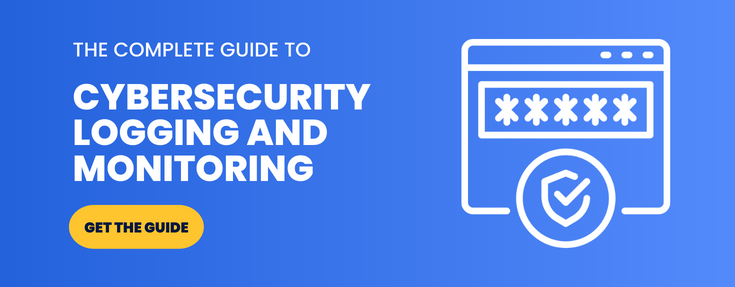What are User Behavior Analytics?

 By
Jason Miller
·
4 minute read
By
Jason Miller
·
4 minute read
If you’re familiar with IT in any way, you are going to be very well acquainted with user error.
When it comes to preventing incidents and reducing risks, most information security officers know that many of the most significant threats come not from malware or direct malicious attacks, but from the behavior of users within the system.
Knowing more about those user behaviors can help you form strategies to prevent threats they might cause inadvertently or intentionally. Here, we’re going to look closer at user behavior analytics, what they are, how they can help you defend against cybersecurity risks, and how security incident and event management (SIEM) software, specifically LogRhythm, provides them.
User Behavior Analytics
Just as anti-virus software constantly scans files for signs of infection, user behavior analytics (or UBA) focuses on scanning the actions undertaken by users on the system.
The purpose of this detection and logging of usage data is to highlight and notify security team members about unusual, anomalous, and potentially threatening activity. While firewalls and anti-malware software prevent attackers from accessing your system, UBA helps spot signs of their activity. This helps your security team react quickly to the threat.
User behavior analytics logs all user activity. It will log when a user requests access to files, when those files were accessed, by whom, how often, and even log what was done with that data.
UBA also logs when users launch apps, which networks they access, and what they do when they are on them. User behavior analytics logs any and all usage activity, both authorized and unauthorized.
SIEM software, however, while focuses on logs generated by systems events, UBA tracks that which system events tend to miss: the behavior of the users themselves. With enough data of user behavior pulled together, as well as predetermined rulesets on certain behaviors, user behavior analytics can learn which activities are permitted or normal, and which are a potential risk or otherwise irregular or anomalous enough to warrant closer attention.
With this machine learning on top of the rulesets the security team applies, this allows UBA to largely ignore the behaviors of legitimate issues while growing more aware of which behaviors could be potentially risky.
The benefits of User Behavior Analytics
The greatest benefit of UBA is that it allows information security teams to better monitor and protect against risks that go otherwise undetected, simply because your other systems aren’t designed to detect them. Security Incident & Event Management (SIEM) services can generate a lot of helpful analytics and send reports when security system logs indicate threats, but those logs don’t always detail what users did, to which files, and when.
As such, threats that result from human behavior, such as guessing or obtaining a password, inadvertently downloading malware as a result of a phishing attack, or intentionally leaking sensitive data as an authorized user, can all be more effectively spotted. Insiders and hackers may be using legitimate tools (or malware designed to appear legitimate) to cause incidents that aren’t easy to detect even for qualified and experienced security teams.
User behavior analytics is able to go beyond what seems legitimate and to recognize when even seemingly appropriate behavior is anomalous enough to arouse enough suspicion to warrant an investigation.
For instance, if an employee is caught in a phishing scam and ends up giving their access details, a human information security analyst would have no need to see anything strange in their account being accessed with the right details. UBA will be better able to highlight unusual behavior of the one who infiltrated the system, allowing security members to cut access until the matter is more closely investigated.
The accuracy of threat hunting, thanks to UBA, is not to be underestimated. The automation of stitching several anomalies into a single incident report can help your security team recognize a potential threat quickly and accurately.
One or two clues that a hacker is not the legitimate user might not be enough to catch their attention, but UBA reports can pull all the different anomalous behaviors together. This efficiency of cataloging a processing user behavior helps it more accurately recognize what is normal and what isn’t, too.
How LogRhythm SIEM can help you analyze your UBA
LogRhythm provides UBA (also known as UEBA/User and Entity Behavior Analytics) that allows your team to improve its threat detection processes. It does this throw some of the following features:
- Collect, process and generate reports based on extremely high quantities of information, including activity and access to emails, user files, networks, and more. LogRhythm’s UBA solutions are able to analyze data from many users and vast volumes of data efficiently, no matter how large your systems are.
- Accurately assess normal vs. anomalous behavior by comparing historical file and user data, generating knowledge of usual access times, permissions, and more. This insight generation allows UBA to better recognize when user behavior falls outside the usual well enough to warrant notice.
- LogRhythm’s UBA solution can send real-time alerts to security team members as soon as enough anomalous behavior is detected. This allows your security team to react fast, cutting access to the system so they can more closely look into the collated anomalies and investigate the source of the potential threat.
- Streamline your response through integrated playbooks, guided workflows, and approval-drive task automation that allows them to handle potential threats in a timely, effective manner and prevent attacks on your system.
The benefits of User Behavior Analytics from LogRhythm SIEM is not to be underestimated. With it, you can more quickly identify brute force attacks in the middle of the attempt, discover accounts compromised due to phishing scams, and identify abuse and misuse of accounts and access by privileged users. The more you use UBA, the more it learns and the better it becomes at identifying new threats, while also staying up to date with new privileged accounts, helping you spot the unauthorized elevation of permissions.
User behavior is still a major blind spot in the security infrastructure of organization digital networks and systems. UBA can make sure that you keep it covered and see threats as soon as they arise.
If you’re interested in the UBA capability of LogRhythm SIEM but aren’t ready to commit to an in-house team, you should give us a call. At BitLyft, we specialize in providing top-tier cybersecurity solutions in an easy, affordable cloud-based service. Set up a short conversation to learn more today!
